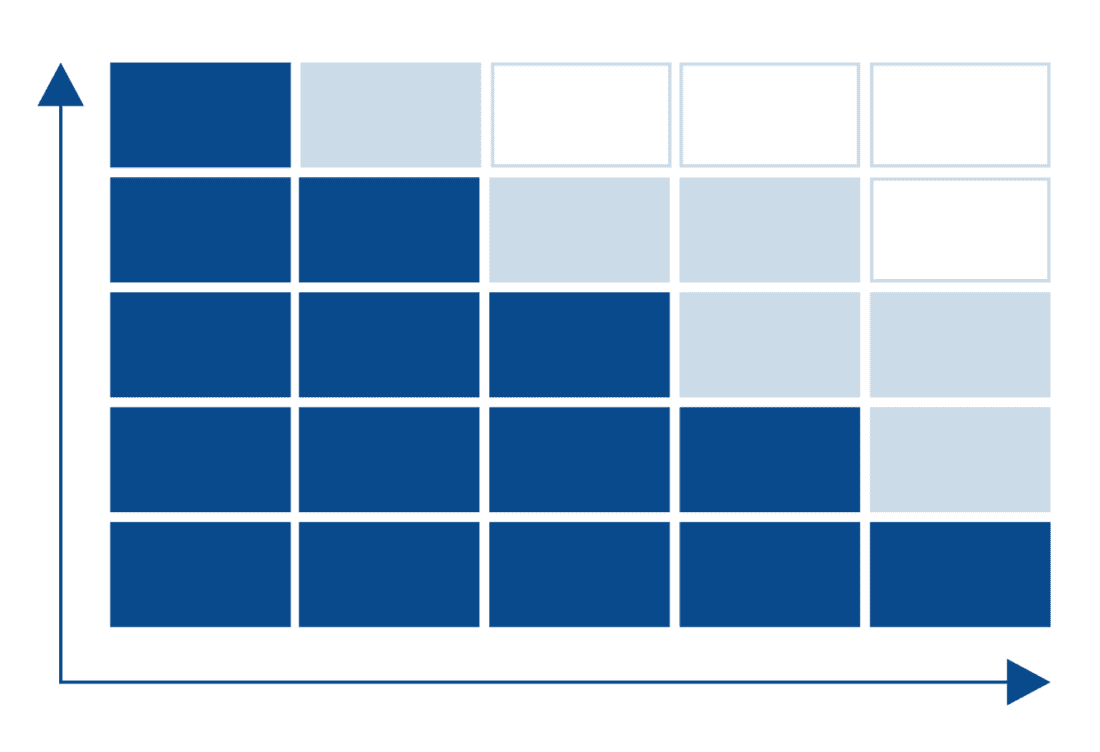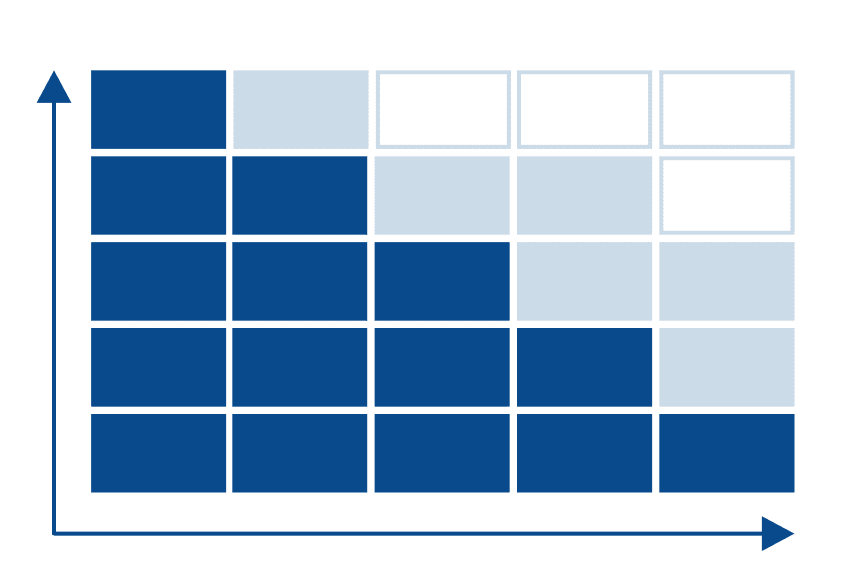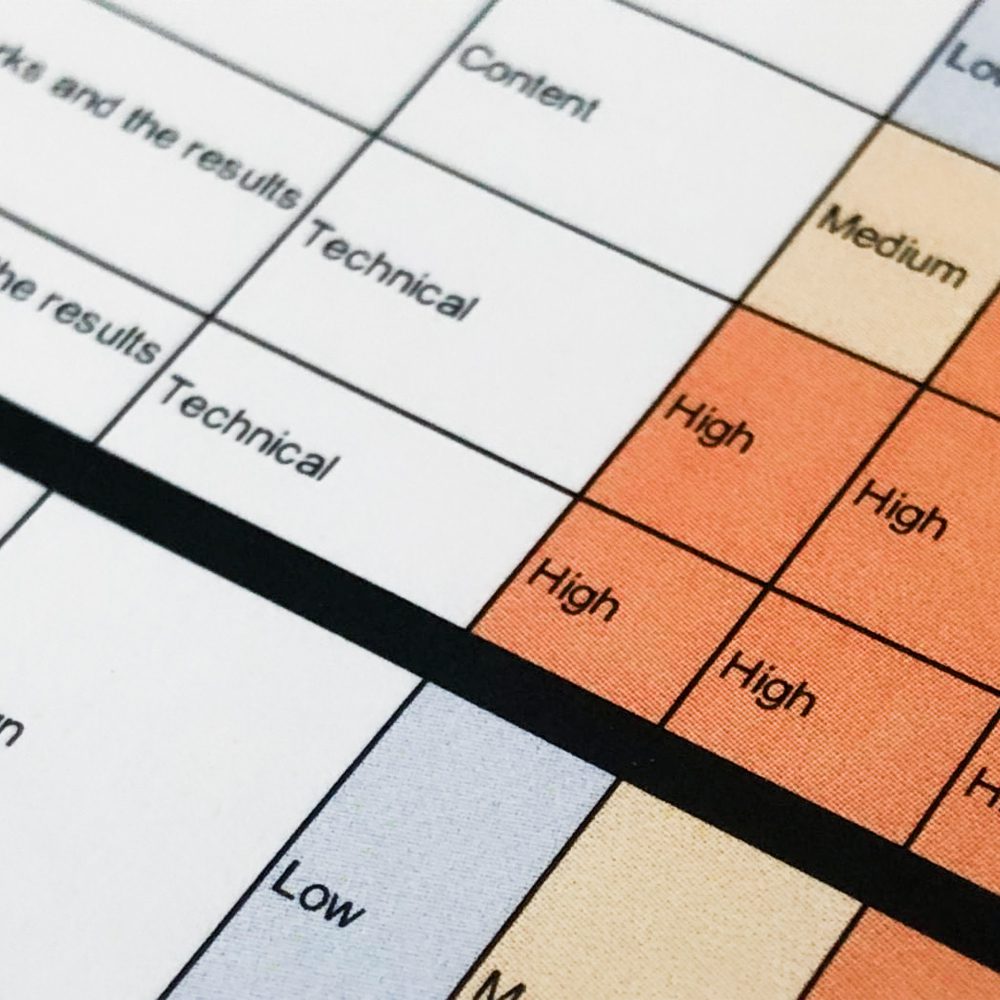Identify and address the gaps that matter.
An organisation’s performance is likely to be influenced by a broad range of internal and external factors. As these change, gaps in planned or actual results, or the capabilities required to achieve these, are likely to be created.
Successful organisations identify these gaps and stop them from growing.
Trusted by












What is gap analysis?
Gap analysis, also referred to as needs analysis or needs assessments, is a flexible method that is used to identify strategic or operational gaps between an organisation’s current state, and their desired future state. They can be used to adapt to changing external factors, correct strategic and tactical plans, or improve an operational process.
A gap analysis should help you close the gap between plans and performance by identifying the root cause of gaps and defining what needs to be done to address them.


Key benefits of gap analysis
Identify key issues and opportunities.
Focus effort on what matters most.
Rapidly close performance gaps.
When to do gap analysis?
GAP analysis is a method that can be used at any point you want to evaluate plans, performance, or capabilities. It is most useful when an organisation is facing significant challenges or is considering a substantial strategic or operational change.
What do I get with gap analysis?
Outputs are dependent on the types of gap analysis conducted but are likely to encompass some or all of the following:
- Gap analysis report
- Gap analysis presentation
- Issue and opportunity backlog
- Draft business case(s)
- Future state vision and objectives
- Future state roadmap
- Measurements of success framework
- Research log and data
Fees
Fees for a gap analysis start from £25,000 (exc. VAT). Fixed prices are dependent on scope.
Timeline
The minimum turn-around time for a gap analysis project is 6 weeks.
What our clients think
“We found working with Border Crossing UX so supportive that Sandyford extended the contract to translate all of the issues into solutions. I would highly recommend commissioning and working with them.”
“Border Crossing UX’s diligence and patience in understanding and unpicking our business has been exemplary. Having such an honest relationship allowed us to address business challenges and meet our challenging objectives.”
“NHS 24 needed to complete a product deep dive which covered a number of areas. I cannot recommend them enough to anyone considering how to drive forward their digital ambitions and develop greater user insight across their digital estate and transformation strategies.”
“We really value Border Crossing UX’s positivity and friendliness along with their ability to understand, capture, and deliver exactly what’s required.”
“Border Crossing UX provided the expertise and support the National Galleries of Scotland needed and have become a trusted supplier.”
Want to work with us too?
Discuss your specific requirements with a user experience specialist.
How do you approach gap analysis?
Our approach to a gap analysis project ensures we:
1. Identify the purpose of the gap analysis
- Kick-off workshop
- Confirm type, focus, and scope of gap analysis
- Project plan


2. Define the evaluation criteria
- Identify baseline data
- Stakeholder research
- Evaluation framework
3. Evaluate and define
- Identify the current state
- Assess current processes, systems, products, services, and strategies
- Collaboratively define the desired future state


4. Prioritise and plan
- Gap analysis
- Capability mapping
- Action planning
5. Communicate findings effectively
- Face to face presentation(s)
- Gap analysis documentation
- Prioritised roadmap and/or actions backlog
- On-going support

A gap analysis is guaranteed to help you define what’s required to close strategic or operational gaps and achieve your future state.
Want a gap analysis?
Discuss your specific requirements with a user experience specialist.